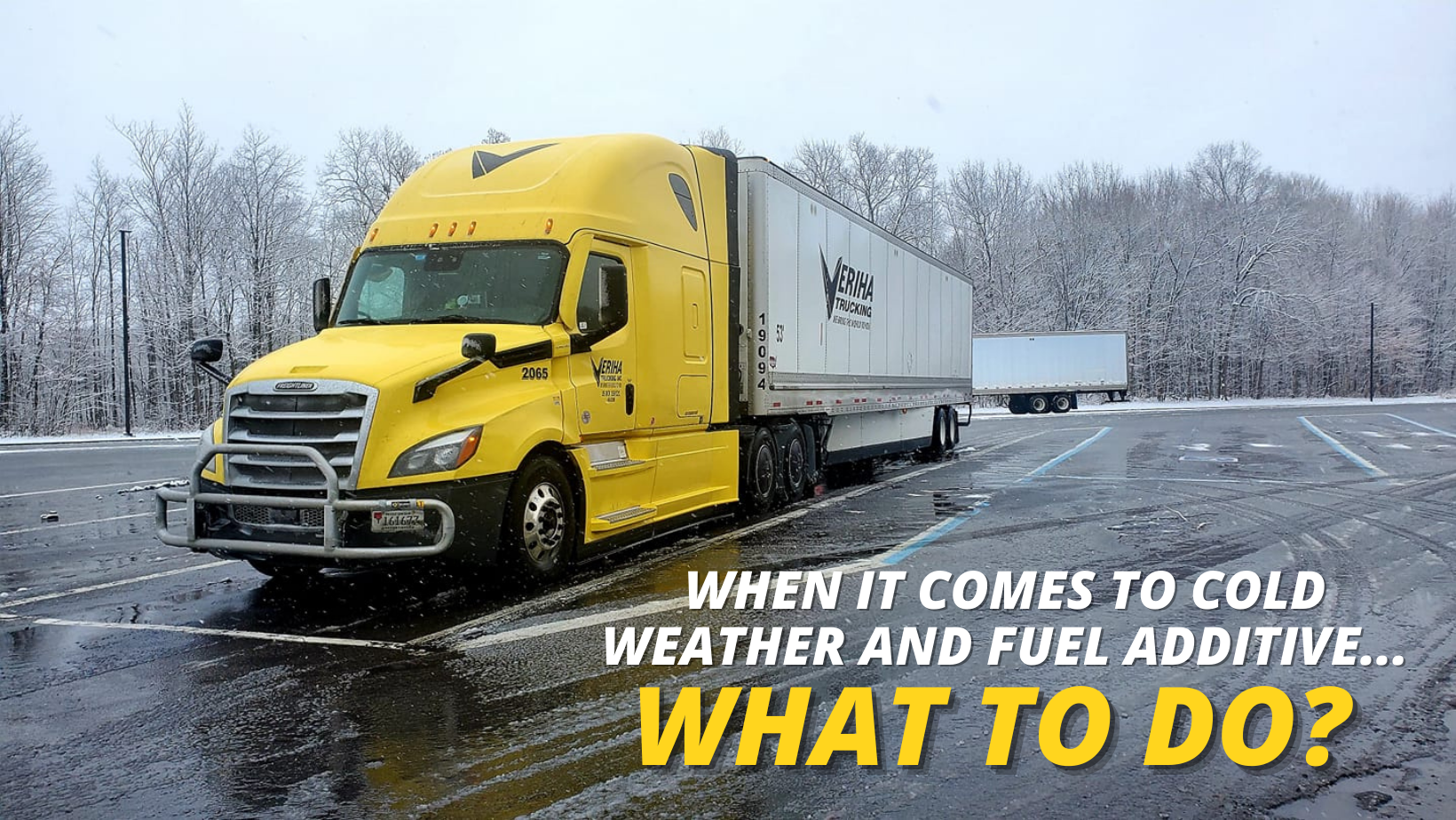Blog
How to Avoid Gelled Fuel During Winter
Are temperatures dropping? Find all you need to know about how to avoid gelled fuel this winter!

When winter weather hits and temperatures drop, make sure to follow these tips to avoid gelled fuel!
Tips you need to know:
When it comes to cold weather and fuel additives, we ask VIPs to watch for a fleet message that will be sent from the Maintenance team allowing you to purchase fuel additive on the road. This is able to be charged directly to your EFS card. The additive comes in gallon jugs whether it be Power Service or another brand (there are many different brands out there) but it is important for you to keep in mind that we do not purchase emergency fuel additive that comes in a red bottle.
The regular fuel additive that we need to use comes in a white bottle, one gallon typically treats up to 300 gallons of fuel. Please dump half of each gallon in both the right and the left-hand tanks in order to increase the freezing temperature or gelling temperature that we experience with the cold weather and fuel.
So, if you buy one jug half goes in the left tank and half goes into the right tank. Remember, white jug, not red jug (there’s not need to buy it because it is a potent additive).
How often should I use fuel additives during winter?
Your Fleet Leader will monitor the weather and will send out a fleet message when temperatures drop low enough to where the additive needs to be used. Typically, once we get into the zero to five-degree temperatures and if you know that is going to get below zero at night we should definitely look at purchasing fuel additive and getting it put in the trucks.
In addition, probably 95% of the fuel locations that we fuel up in the Midwest already have pre-blended fuel. Whatever the engine doesn’t burn for fuel gets returned to both fuel tanks and that is warm fuel so that also increases the gel point of the fuel.
We do not utilize winter fronts on our diesel tractors just because of the emissions and how warm the engines run. From a CNG standpoint, those tractors in our Fleet do run winter fronts to help maintain engine heat. So be sure you’re installing the winter fronts if you have a CNG once we do get into extremely cold temperatures. If you do not have a winter front for your CNG tractor, make sure you’re reaching out to the Maintenance department so we can get one installed.
What do you mean by gel?
Gelled fuel is when the fuel gets very thick almost like jello and the fuel system cannot pump it through the fuel filters. This will starve the engine of fuel. Often you will experience a decrease in power prior to a potential gel situation.
One thing you can monitor as well when you’re doing your pre and post-trip inspections - the majority of tractors have what we call Davco fuel heaters. They either are located on the right or the left-hand side of the engine. They’re a clear, dome-shaped filter housing that you can actually see the fuel and the filter. If you notice that the fuel is starting to get cloudy, that’s a good sign that it's starting to get in a pre-gel state. The dome assembly is heated and warms the fuel before it goes into the engine so they also serve as a heater as well. However, if the weather is extremely cold, they can’t keep up so keep a close eye on that as well.
In addition to that, when you’re on your home time before you shut down, make sure you request a fuel solution so you can get fuel into that truck and park with it as full of fuel as you can. We suggest you do this because the fuel already within your tanks will be warm and will generate condensation. The less air capacity that’s in the fuel tank the better otherwise condensation will sit at the bottom of the tank. When the truck is off and everything gets cold, the condensation will freeze at the bottom of the tank. So, if we can keep the fuel capacity as high as possible, it will help mitigate that airspace and condensation generation. Also if you’re coming up from a southern state, make sure you do a fuel solution as well to get some blended fuel back into your tanks to mitigate the gelling process. Finally, make sure that you are plugging your truck into a block heater while on your home time.
If you are in need of a fuel solution, that can be requested by sending a message to your Fleet Leader.
Watch this blog in video format here:

